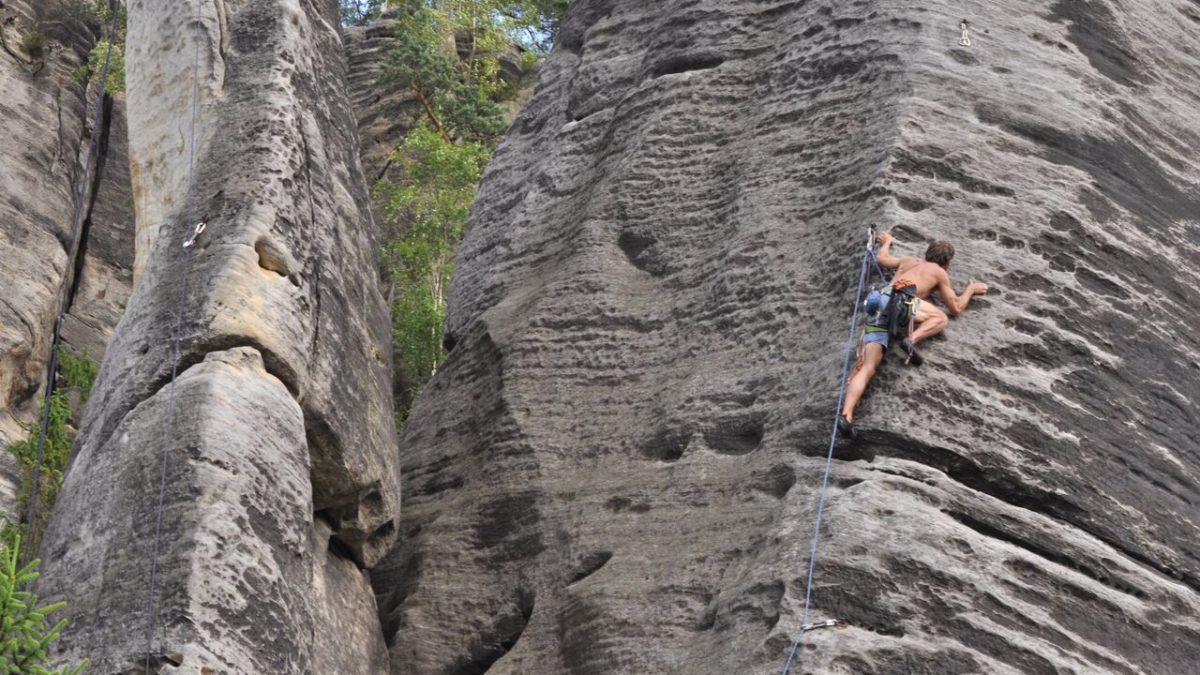Watch Sandstone Climbing on Towers Steeped in History
A tour through some old rock climbs and the ethics that keep them bold

The Elbsandstein sandstone towers in the Czech Republic and Germany have a lot of climbing history and offer some unique vertical experiences. Local climbers Tom Krul, Fabrizio Zampetti and Andrea Rizzi explore a few climbs and the trad ethics that keep them bold and run-out.
There strong climbing traditions were laid down in the Saxon Climbing Regulations back in 1913. The most important regulations are:
- Artificial aids are forbidden. The climber is only allowed to use natural hand- and footholds and must use his own bodily strength to climb.
- Ropes, slings, carabiners, etc., may only be used for protection.
- The existing surface of the rock must not be altered (exceptions are safety rings).
- Safety rings may only be established by the first person to climb a route. The use of subsequent rings is decided by the sub-committee of the SBB responsible.
- The use of chalk is forbidden.
- Nuts, friends and similar aids are banned. Only slings may be used.
- Climbers must use their own strength to hold themselves in position and may not use other means, such as ropes, to support themselves.
- Initial ascents of a new climbing route may only be attempted from bottom to top. The opening of new routes by driving in pitons “from above” (i.e. by hanging off a rope from the summit or ledge) common in other climbing areas, is forbidden.
- Climbing is forbidden on wet or damp rocks, if depending on the rock, there is a risk of damage to the rock and of losing one’s footing or handholds.
Sand Rules
Check out the latest buyer's guide:
The Best Climbing Gear According to Our Editors – April
Every month we're bringing you our favourite gear so you can complete your climbing kit with the latest and best stuff out there


